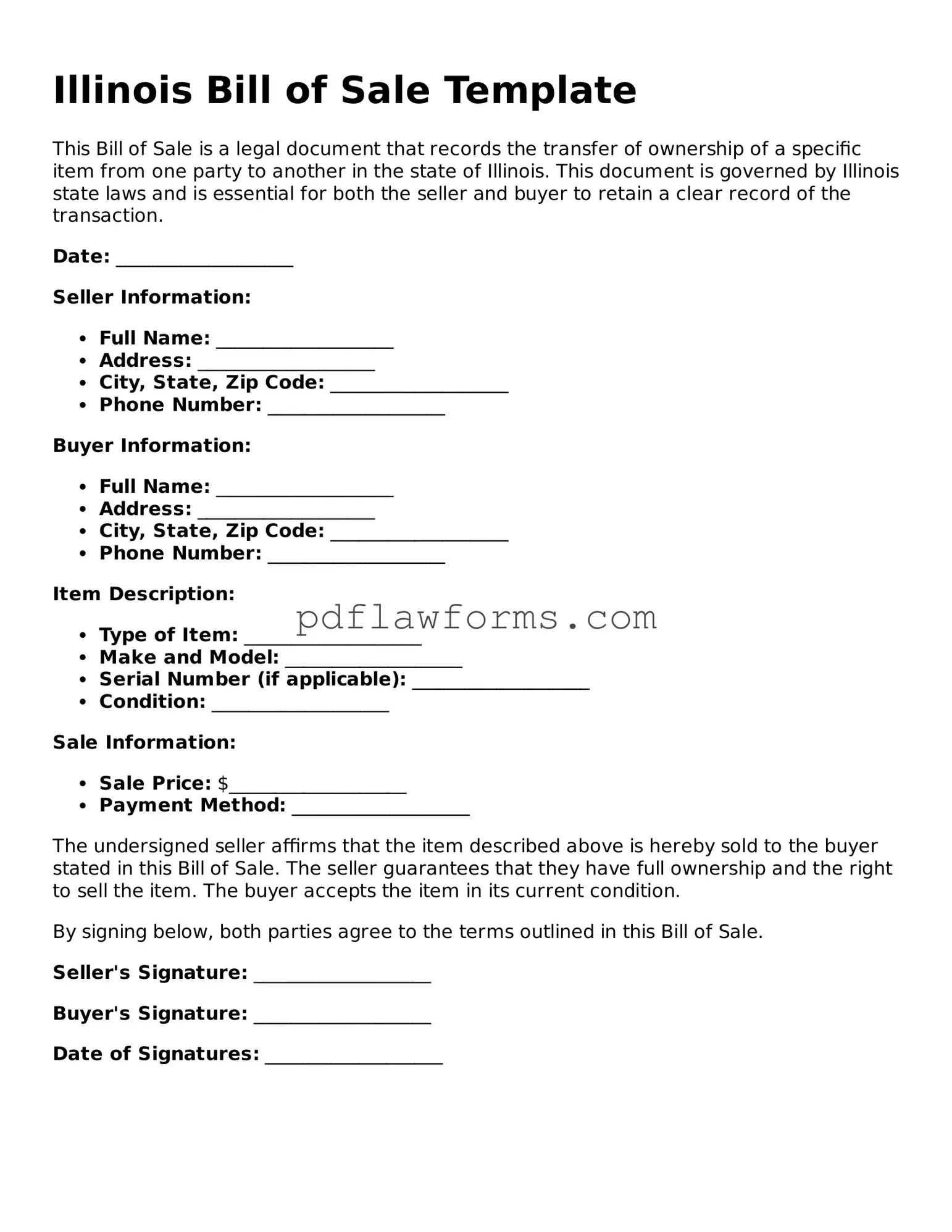When completing the Illinois Bill of Sale form, individuals often overlook important details that can lead to complications. One common mistake is failing to include accurate information about the buyer and seller. Names, addresses, and contact information must be precise. Omitting or misspelling these details can create issues later, especially in the event of a dispute.
Another frequent error involves neglecting to provide a complete description of the item being sold. Buyers need to know exactly what they are purchasing. This includes the make, model, year, and any identifying numbers, such as a Vehicle Identification Number (VIN) for cars. A vague description can lead to misunderstandings and potential legal disputes.
Many people also forget to include the sale price. This amount is essential for establishing the value of the transaction. Without it, there may be confusion regarding the terms of the sale, and it could affect tax obligations. Clearly stating the sale price avoids ambiguity and protects both parties.
Another mistake is not signing the document. Both the buyer and seller must sign the Bill of Sale to validate the transaction. A lack of signatures can render the document ineffective and complicate the transfer of ownership. Ensure that both parties sign and date the form to confirm their agreement.
Some individuals fail to keep a copy of the completed Bill of Sale. This document serves as proof of the transaction and is important for record-keeping. Without a copy, it can be difficult to resolve any future disputes or to provide evidence of ownership.
Lastly, people sometimes do not check for any additional requirements specific to their type of sale. For example, selling a vehicle may require additional documentation or steps, such as notifying the Department of Motor Vehicles. It is crucial to be aware of these requirements to ensure compliance with state laws.
